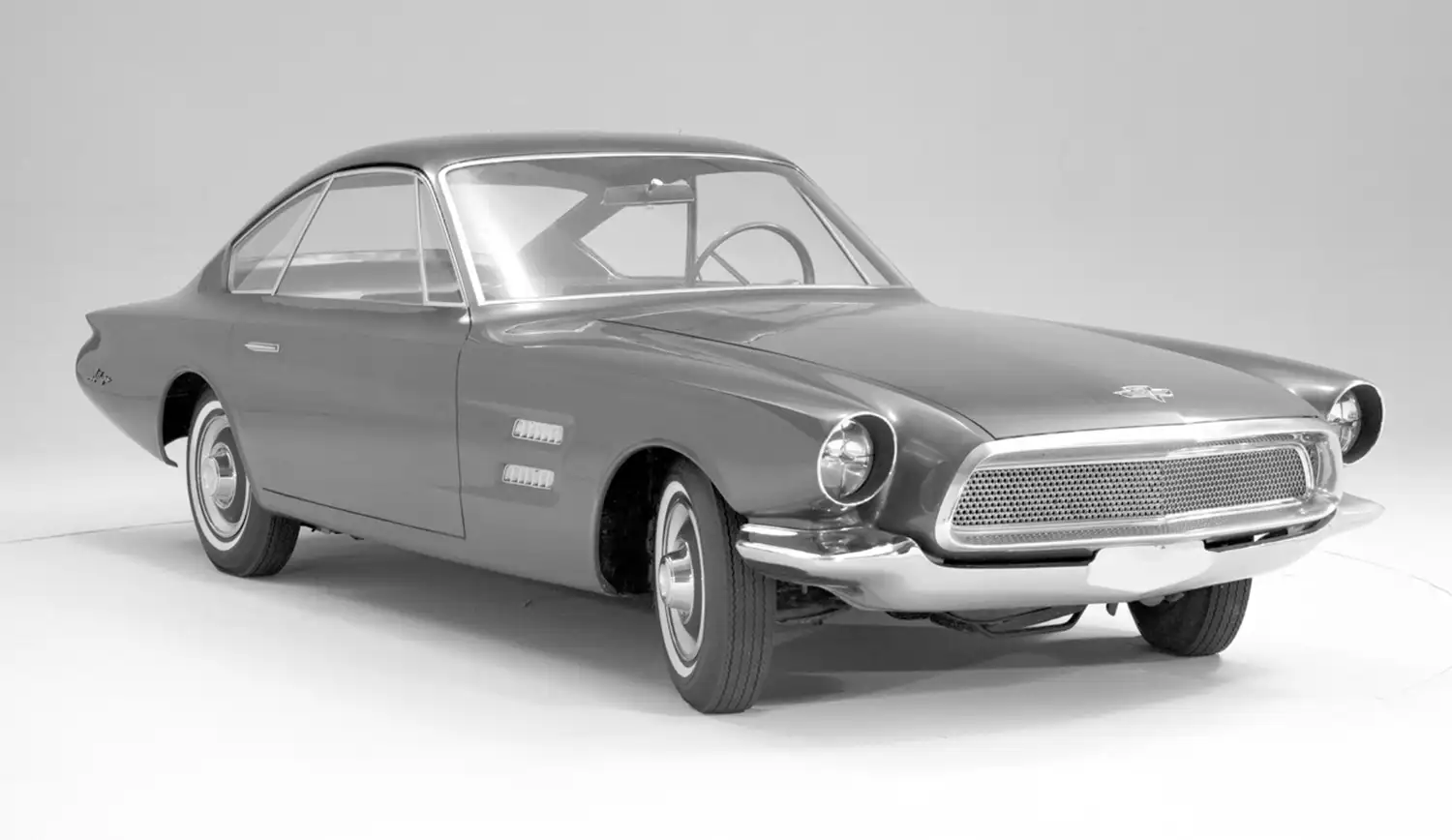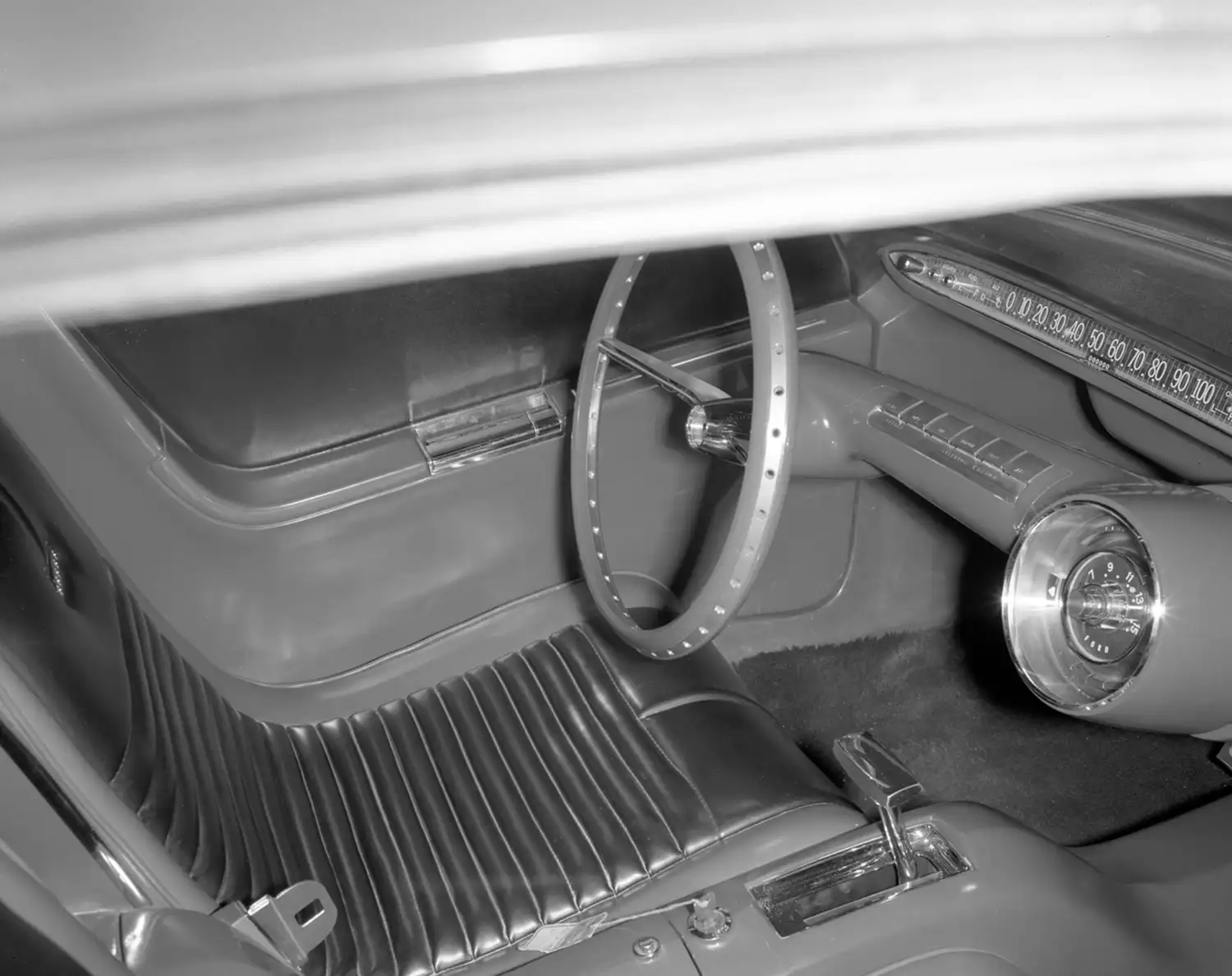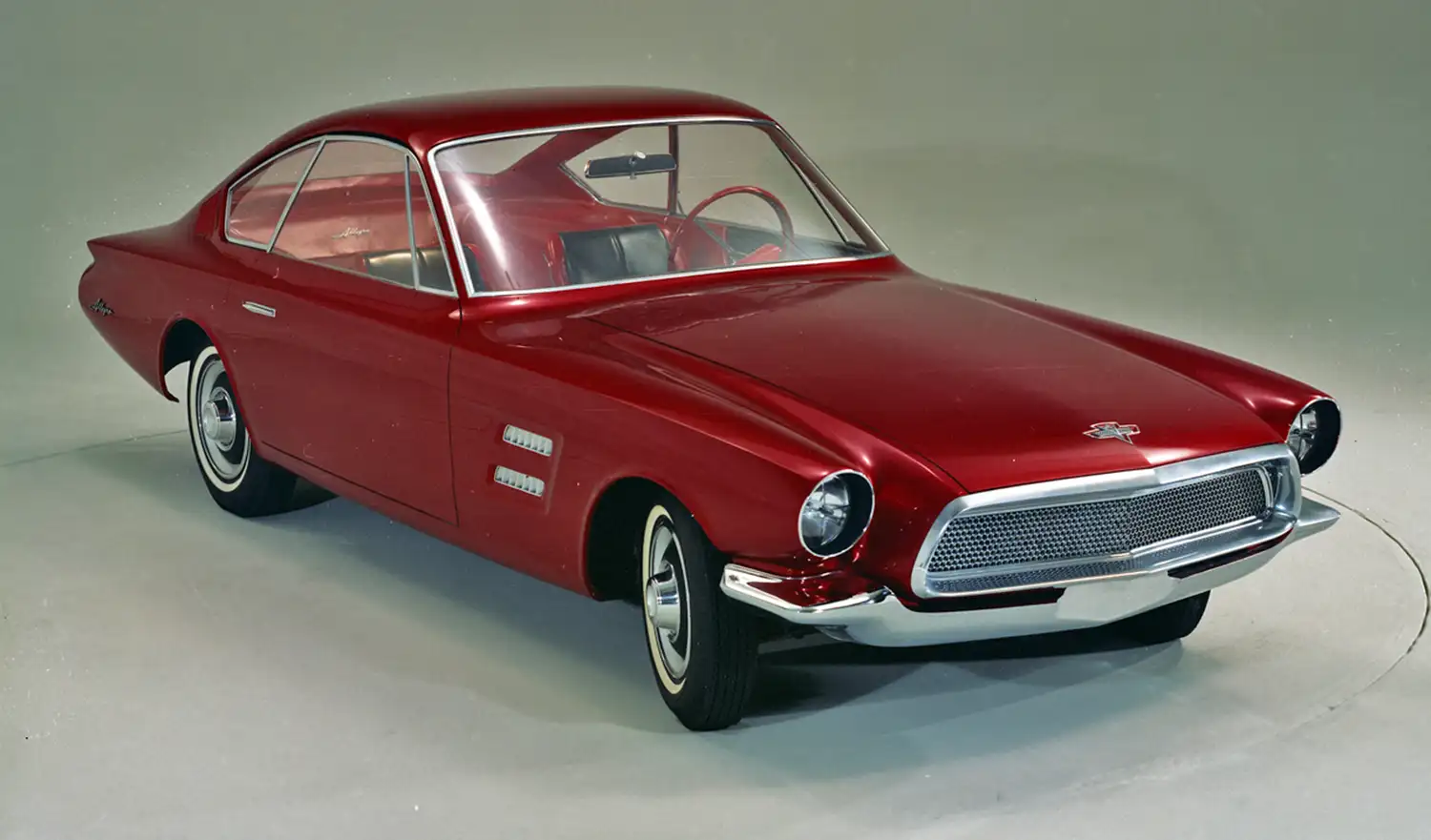
The 1963 Ford Allegro concept car stands as a testament to Ford’s innovative spirit during the early 1960s. While it may not have directly led to the creation of the legendary Mustang, the Allegro played a crucial role in shaping Ford’s design language and technological advancements that would later influence the iconic pony car.
A Futuristic Design
The Ford Allegro, unveiled in 1963, was a bold and futuristic concept that showcased Ford’s vision for the future of automobiles. Its sleek, aerodynamic body was a departure from the more conventional designs of the time. The Allegro featured a compact and streamlined profile, with smooth curves and a distinctive, almost spaceship-like appearance. The concept car’s design was a clear indication that Ford was looking to break away from tradition and explore new horizons.
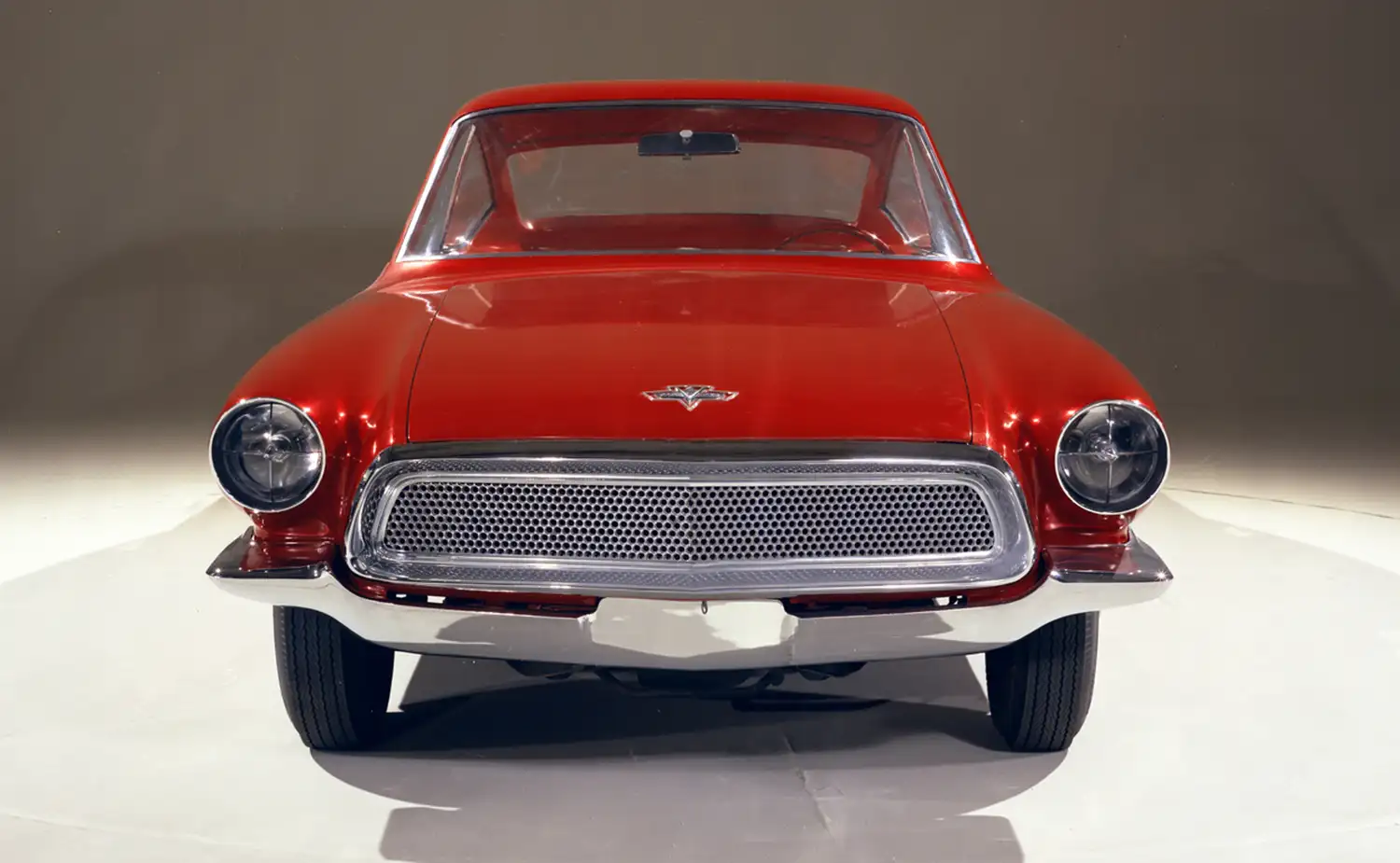
Technological Innovations
One of the standout features of the Allegro was its advanced suspension system, which was designed to provide a smoother and more comfortable ride. This focus on innovation extended to the car’s interior, where Ford experimented with new materials and layouts to create a more futuristic and user-friendly cabin. The Allegro’s dashboard was minimalistic, featuring a sleek, horizontal design that would later influence the interiors of production vehicles.
Influence on the Mustang
While the Allegro itself did not evolve into the Mustang, it played an essential role in the creative atmosphere at Ford during the early 1960s. The Allegro was part of a broader experimental program that encouraged designers and engineers to think outside the box and push the boundaries of what was possible in automotive design. This spirit of innovation and exploration was a driving force behind the development of the Mustang, which made its debut in 1964.
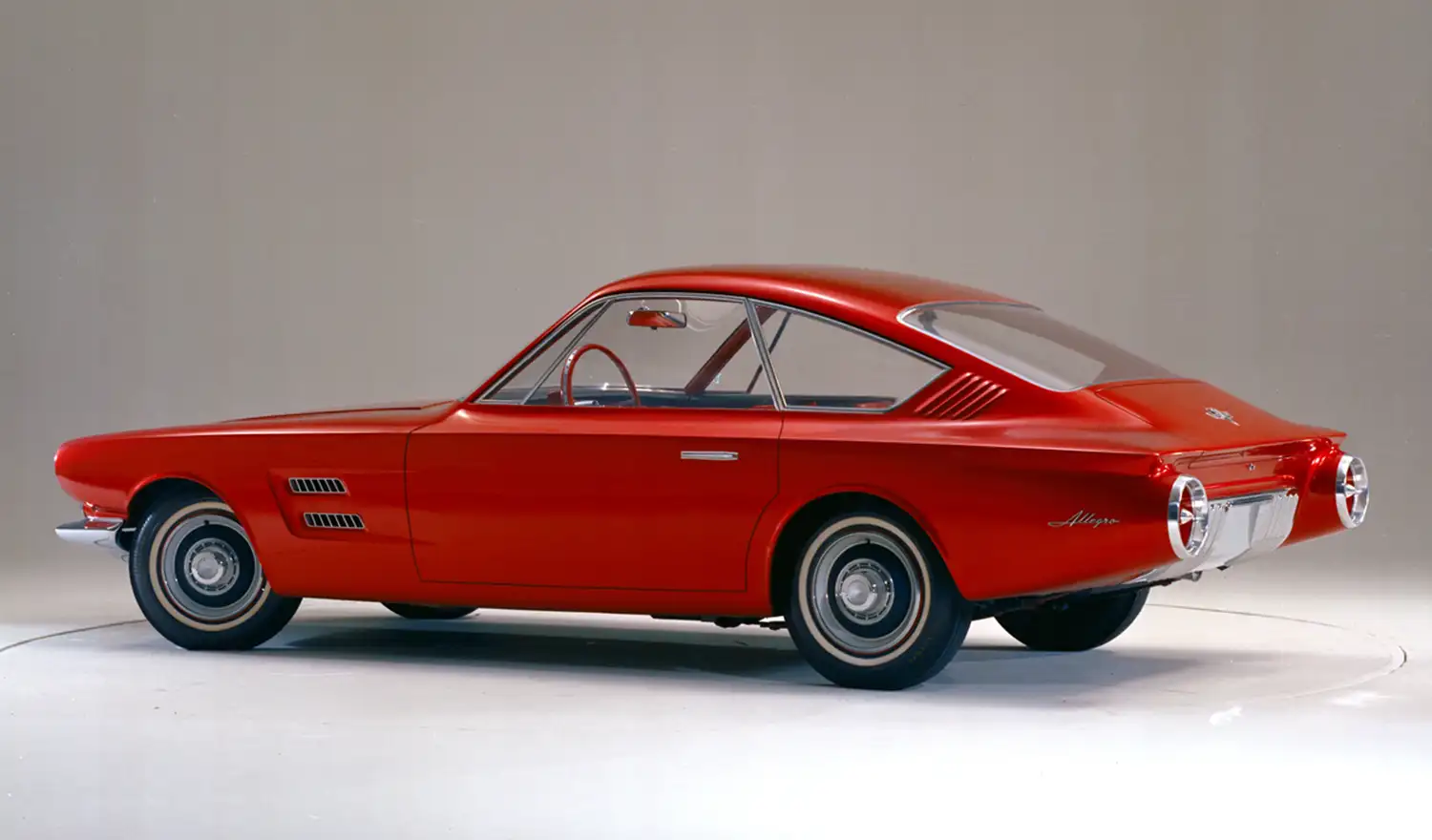
The Creative Environment at Ford
The early 1960s were a period of significant experimentation and innovation at Ford. The Allegro was one of several concept cars that helped shape the company’s design philosophy and technological advancements. The ideas and concepts explored in these experimental projects created a fertile ground for the birth of the Mustang. While the Allegro’s design cues and engineering concepts were not directly carried over to the Mustang, the spirit of creativity and innovation it embodied undoubtedly influenced the team working on Ford’s first pony car.
Legacy of the Allegro
The 1963 Ford Allegro concept remains an important part of Ford’s heritage. It represents a time when the company was willing to take risks and explore new ideas, laying the groundwork for future successes. Although the Allegro never went into production, its influence can be seen in the design language and technological advancements that characterized Ford’s vehicles in the years that followed.
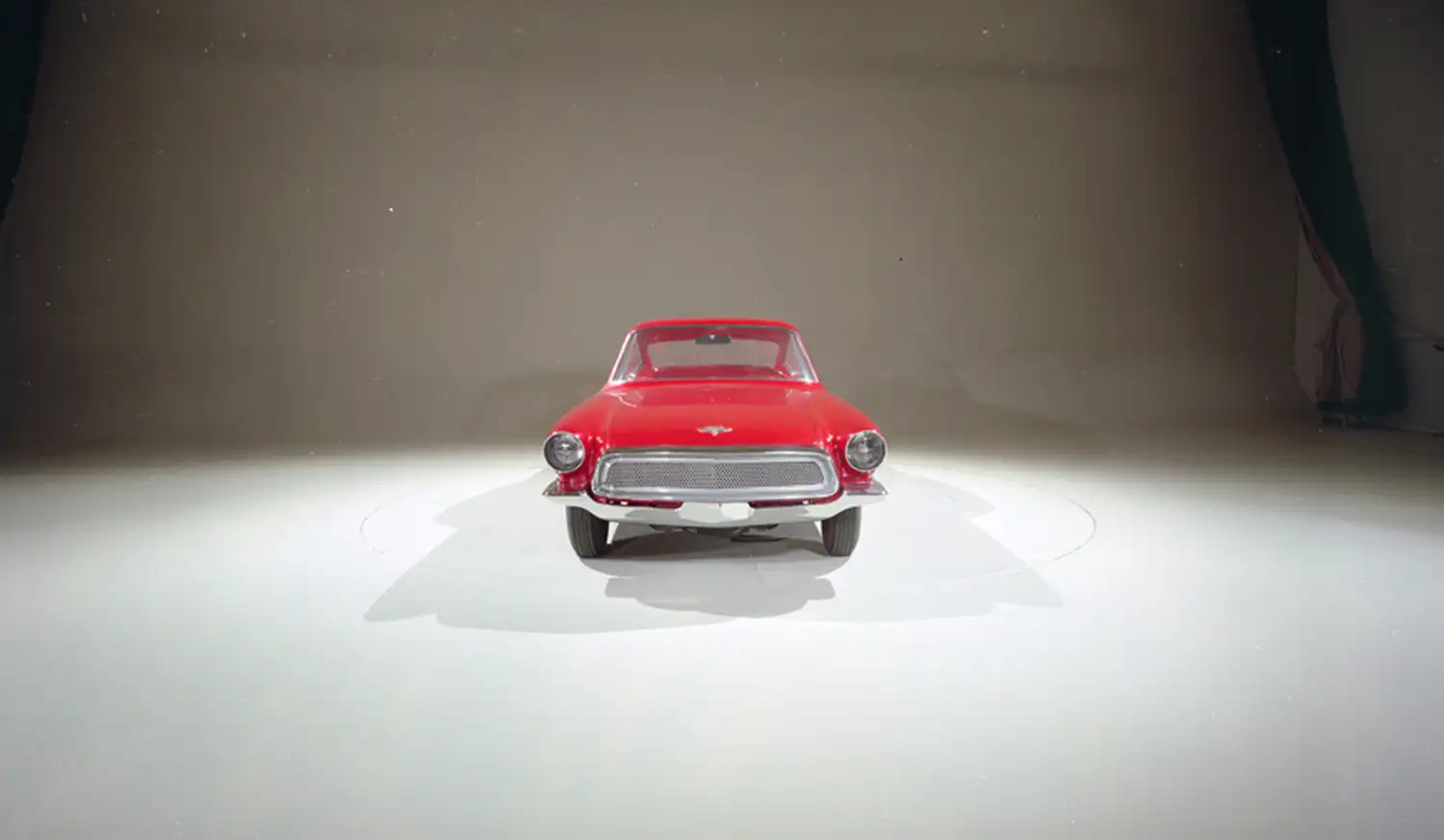
Conclusion
The 1963 Ford Allegro concept was more than just a futuristic show car; it was a symbol of Ford’s commitment to innovation and a catalyst for creative thinking. While it may not have directly led to the creation of the Mustang, the Allegro played a vital role in shaping the environment that allowed the iconic pony car to come to life. Today, the Allegro remains a fascinating glimpse into Ford’s vision for the future and a reminder of the importance of pushing the boundaries in automotive design.
The 1963 Ford Allegro concept is a fascinating chapter in Ford’s history, showcasing the company’s willingness to innovate and experiment. Its influence on the creative process that led to the Mustang highlights the interconnectedness of Ford’s visionary projects during this exciting period.
